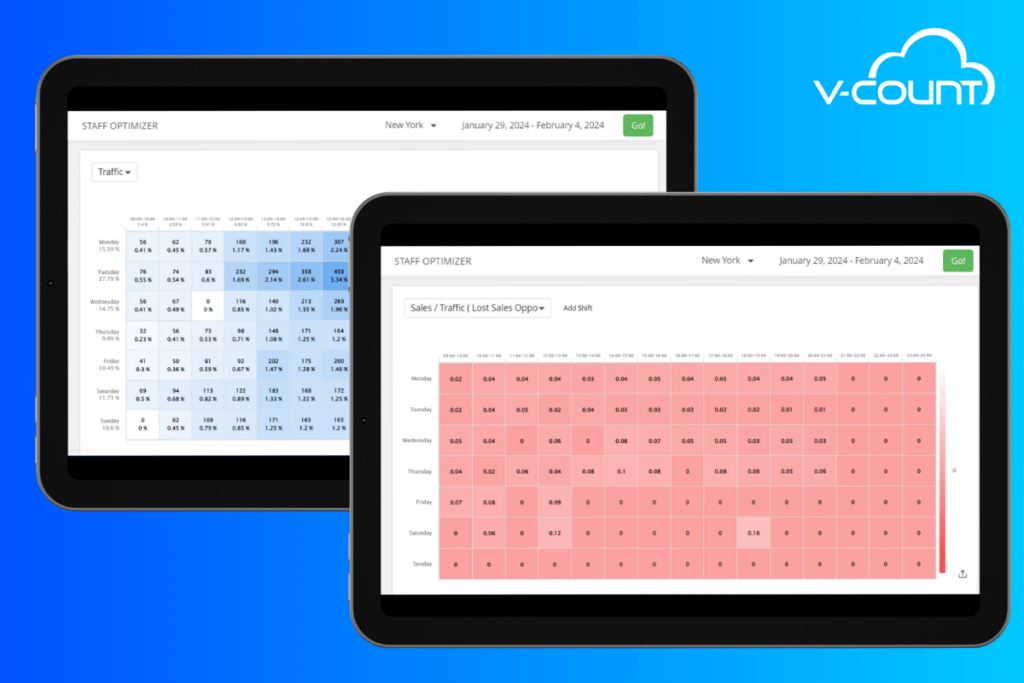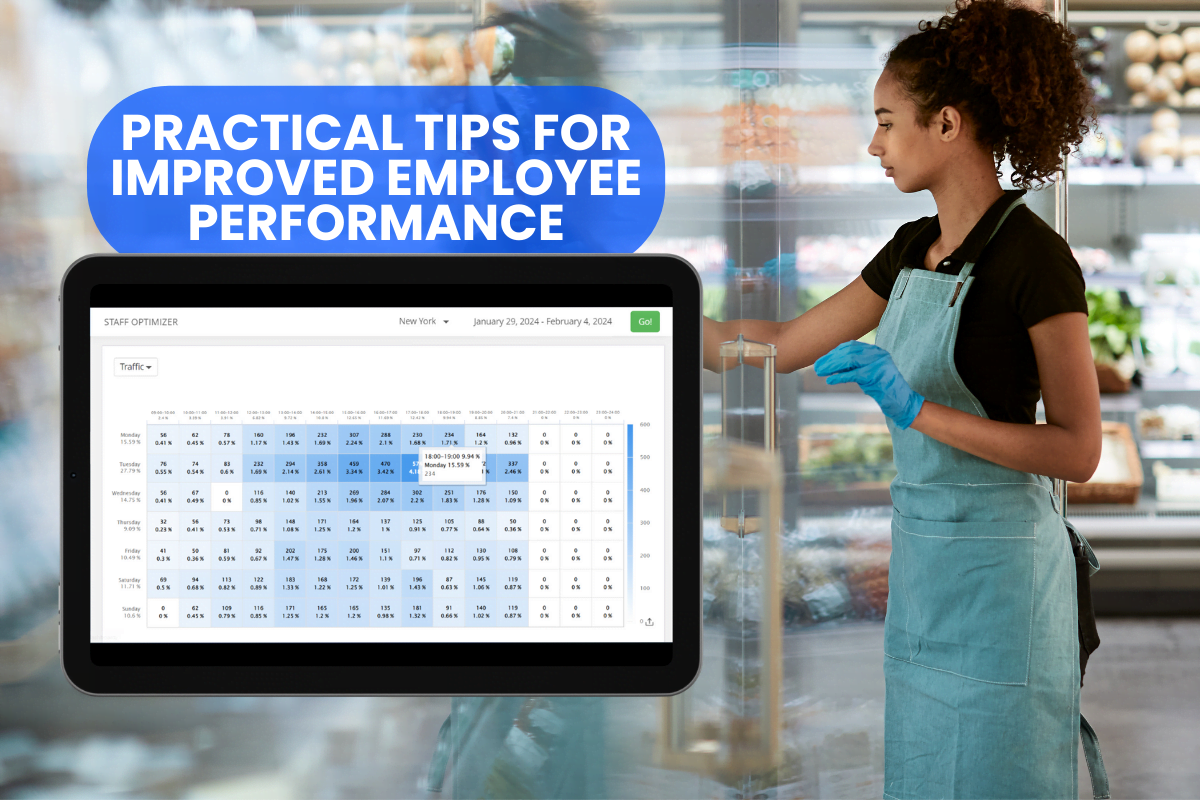Do you want to improve customer experience and boost metrics at your retail store? Focusing on creating a culture of performance will help you get there.
The digital era may have arrived, and it’s growing strong, but e-commerce isn’t here to completely replace in-store shopping. Even in its current form, online shopping has many shortcomings, and a considerable number of products are more convenient to buy in person. In fact, many big online stores are practicing sales models in which you can book items online and get to the physical store to complete the transaction.
According to NIQ’s 2023 Consumer Outlook report, global online sales growth has slowed noticeably, and nearly half the world prefers omnichannel shopping. To top it off, in important categories such as groceries, furniture, and electronics, consumers prefer in-store shopping because this approach allows them to physically see and touch products before making a purchase.
Employee Performance is More Important Than Ever
Several other reliable data providers also suggest e-commerce’s pace is slowing, and customers are going back to the stores, but this time around, they are more educated and informed than ever. They care more about how they are treated at a retail store, if the store management complies with health and safety regulations, and if the queues are discouragingly long; additional factors also come into play, but one warning stands out among all the studies: retailers have to adapt to their visitors’ post-pandemic needs and it all starts with your employees.
Considering how online sales growth is coming down from pandemic-driven highs, and customers are returning to retail stores, it’s the perfect time to develop new strategies to reach and engage with them, but more importantly, as a decision-maker, you need to ensure they come back for more and recommend your store to their family members and friends. The only healthy way you can reach your goals in this matter is by providing them with an excellent customer experience. And, of course, to make your customers happy and satisfied, you need to make sure your team is up for the task.
Employee Training and Development
When a customer visits your store, it’s highly likely that the face of an employee will be the first thing they will see or seek. As mentioned earlier, in the post-lockdown era, your customers’ wants and needs are constantly changing, and your team needs to be trained according to what these needs are.
However, you should never skip the initial steps in employee training. This means you need to identify the skills and knowledge gaps that exist among your employees, or else you won’t know in which ways they can improve. You can use affordable and advanced technologies to measure employee performance and compare performance data among other team members. You can even track their interactions with customers or products in specific zones and generate performance reports over time to see if the training is paying off.
Encouragement for self-development is extremely important, and as the decision-maker of your store, you need to find ways to ensure your team members participate in the training programs you provide for them. It’s just as important to communicate with them throughout the whole process and do follow-ups to see what they’ve learned and how they’re translating this new knowledge they’ve gained into their jobs.
Optimized Staff Scheduling

Nowadays, you can easily find a number of AI-powered software you can use for employee scheduling, and they’re, indeed, quite effective. However, the best practice for optimizing staff schedules is using a technology that you’re already employing for visitor tracking and combining it with your team’s expertise. This way, you can discover which of your employees are great with customers and which ones are more suited for less customer-facing objectives and plan your schedule accordingly.
There’s an even better benefit to making a combination of solutions here. Once you discover your establishment’s prime and slow hours and staffing needs, you can use this information to optimize employee performance and get the best out of them timewise. With the right approach and actionable visitor data, you can create a work schedule that allows you to always have enough employees to meet customer needs. Plus, you’ll reduce both your energy expenses and employee costs while delivering a more satisfying guest experience.
Clear Communications
As the main person responsible for employee performance, you have to translate your company’s expectations and goals to your employees in a clear, easy-to-understand way. The whole team must work toward the same goal but also clearly understand what their individual responsibilities are. As the decision-maker, you’re expected to provide feedback on employee performance, what they’re doing right and what’s not working, and bring your expertise forth to ensure any obstacles can be overcome with the right strategy.
If the task at hand exceeds your experience or expertise, you can always seek out help from others; in fact, if you have an experienced employee with the right skillset among the team for a specific task, don’t be shy to give them more responsibilities, but make sure to reward them accordingly as well. Proper guidance is always a must when working with a team.
Employee Performance Tracking
In terms of digital solutions, you have many good options to choose from to track employee performance accurately. Most modern POS systems and people counting solutions come with built-in performance tracking features. Of course, you first need to set performance goals for your teammates. These goals don’t even have to be sales-focused. You may simply want to improve footfall traffic inside your stores or reduce energy waste, improve customer satisfaction, or get rid of excess inventory to make room for new and exciting products.
Either way, you need to set clear expectations for each employee and also the department. Based on performance data, you can set new goals and provide healthy and constructive feedback to your employees. You should base performance reviews on objective metrics such as shopper yield, ATV (average transaction value), customer reviews with ratings, and other sales-oriented data.
Doing weekly or monthly performance reviews with your employees and explaining what awaits them next and how they will be rewarded if they reach their goals will also boost employee productivity. Being vague, unfair, or unrewarding, on the other hand, most likely will produce negative results in terms of employee performance.
Build The Right Team With The Right People

If you’re building a whole new team or planning to make additions to the already existing and well-performing group of people, you must make sure to hire people that fit your business and work culture. Hiring new employees based on skill or availability alone can do more harm than good in the long run.
First things first, your job advertisements have to be clear and to the point. Your job ad should also attract the right people for your enterprise. Don’t be hasty; use some auto-elimination filters for applicants that just won’t work for you. If the person can’t easily commute to your store and if the position doesn’t allow hybrid working, then this partnership won’t likely work unless changes can be made. Set up several interviews with different goals to observe the personality traits and behavior of potential teammates and see if they’re culturally fit for the team you want to establish.
To attract the right people for your company, you should also make sure to provide competitive compensation and benefits; also opportunities and growth for your employees’ development.
Alternatively, you can look at the existing employees and promote from within, or change positions of your employees if their skills are a better fit for a new role that opened up. Of course, always consider your employee’s feelings and don’t make drastic changes to their performance goals without their consent.
Team Building to Improve Employee Performance
This one is a classic, but it’s a strategy that has survived despite changing business trends throughout the years. Fostering a positive work environment improves employee performance, which leads to more satisfied customers and inadvertently drives more sales.
To create a high-performing team, you should put enough focus on building a positive work environment. Team building activities and events, such as picnics, escape rooms, scavenge hunting, etc., can help encourage teamwork and collaboration.
Company retreats, wellness programs, parties, and celebrating certain important milestones can also boost employee performance and productivity. If you’re a team that mainly works in a remote setting, you can also organize some meet-ups or online events such as playing video games or doing a watch party for a series can also boost your team-building efforts.
Conclusion
Improving employee performance is a continuous process. A well-oiled, highly-performing team won’t appear overnight. Building a team and improving employee productivity requires planning, dedication, effort, and, most importantly, patience. People counting and visitor analytics tools such as BoostBI, provide factual and reliable data for you to measure your team’s and store’s performance accurately and take action accordingly.
Get in touch with us now, and we’ll show you how you can utilize people counting with your business operations to improve employee performance. Let’s shape the future of your business together!





